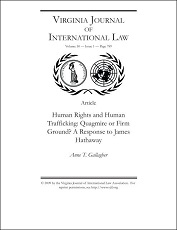Lynette E Sutherland

Extract
After I read the articles on abortion in CMAJ I began to wonder if ready access to abortion is the main issue. Are we faced with a Yes-No decision, or are we looking at a symptom of something deeper? . . . The world is overpopulated, yet more and more children are being born. Despite the efforts of many dedicated people (especially women) to take information on birth con- trol to the most afflicted parts of the world, little progress is being made. All the solutions are “Band-Aid” ones, and almost all – contraceptives, abortifacients and abortion itself – are directed toward women, whose reproductive capacity is certainly the root of so much trouble. To cure these ills, nothing short of a redirection of human nature is necessary. . . .the earth’s mad population increase will surely go on to a cataclysmic end. We can put this off temporarily if we follow the Chinese example (one-child or two-children families) worldwide, with strict supervision of female reproduction.
Sutherland LE. (Correspondence) Physicians and abortion. Can Med Assoc J. 1993;148(8):1276-1277.
